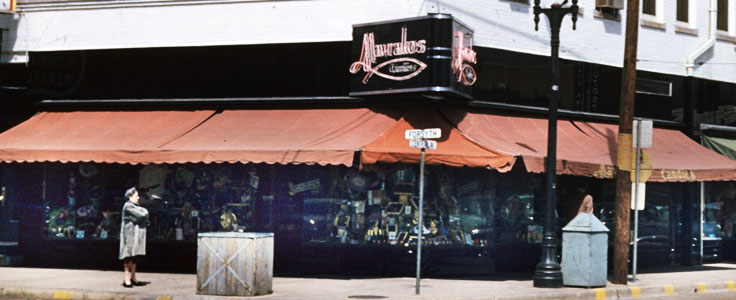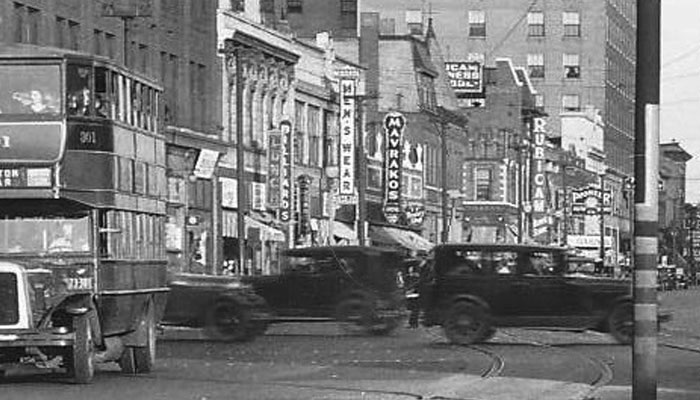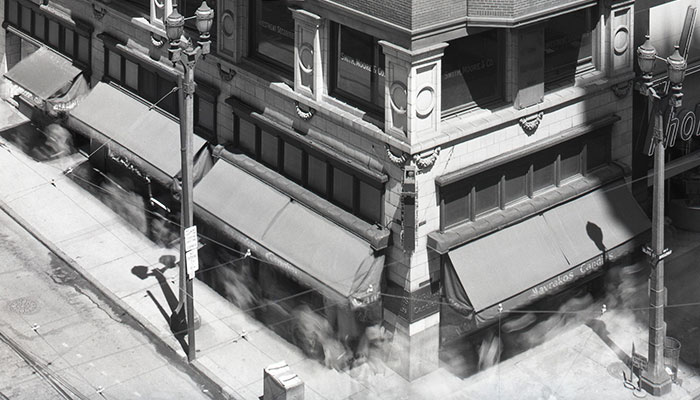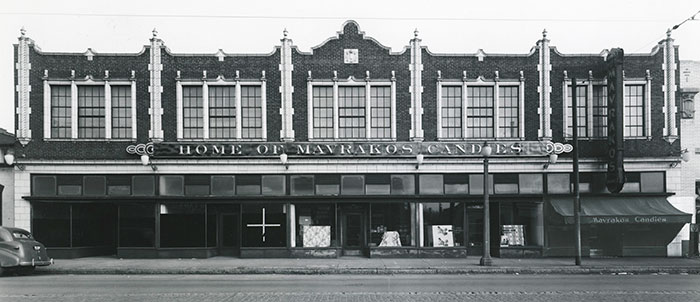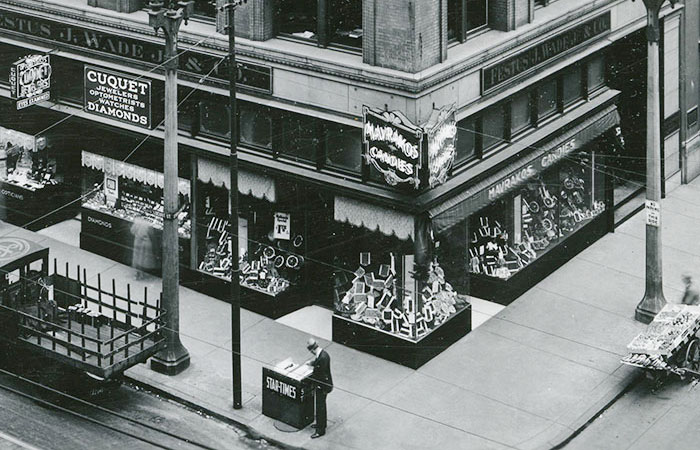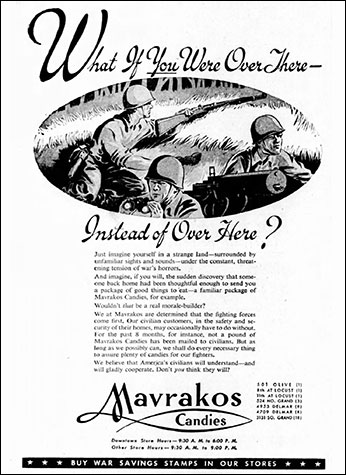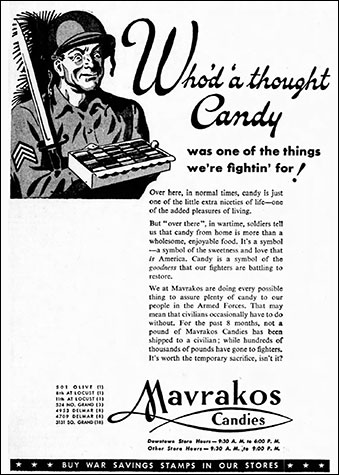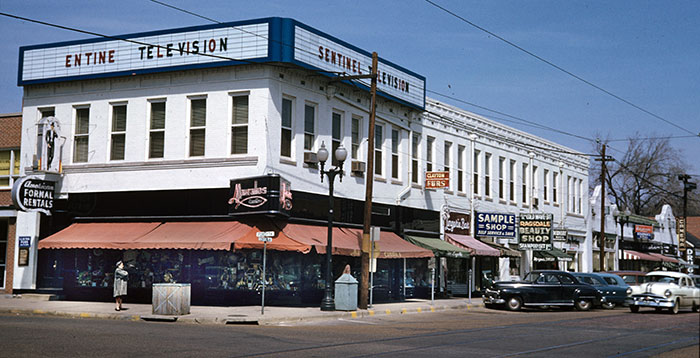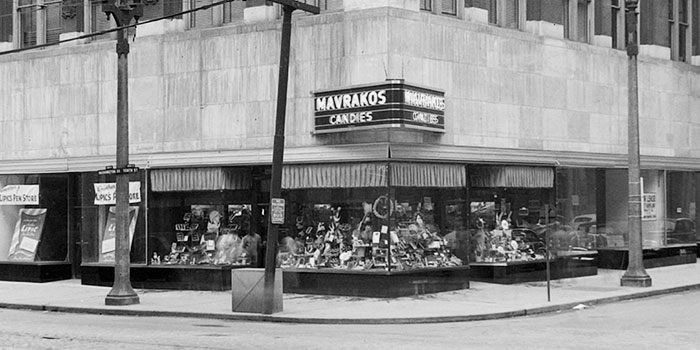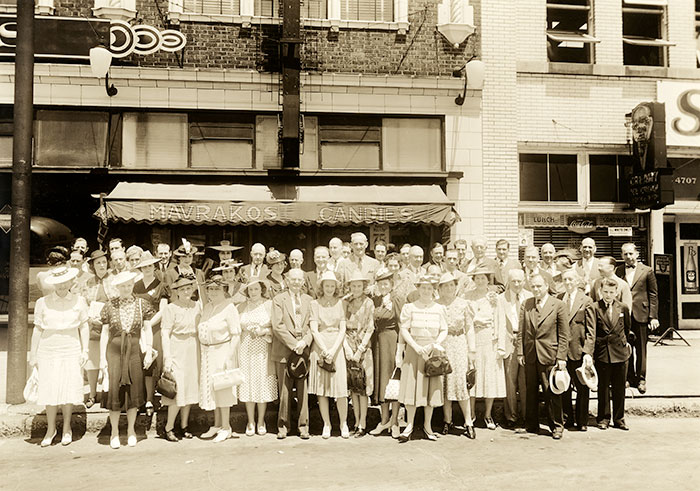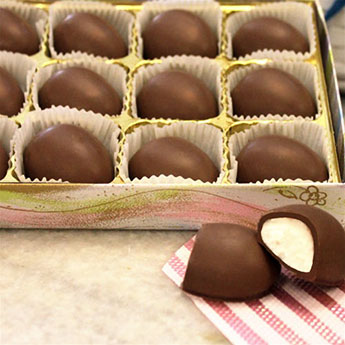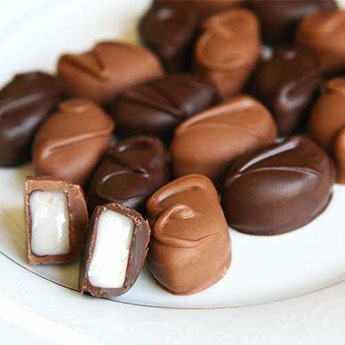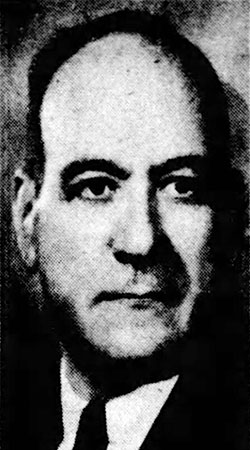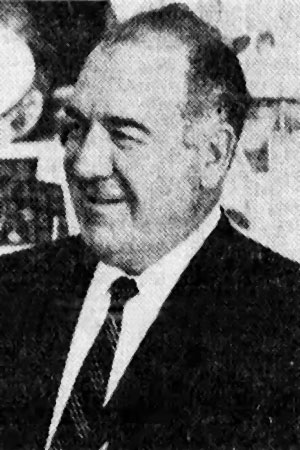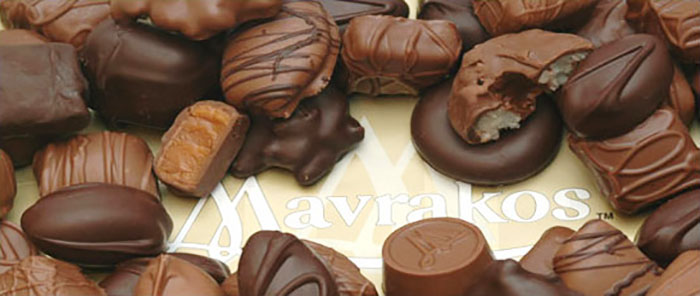|
Mavrakos Born in Greece in March of 1885, John Louis Mavrakos emigrated to the United States in 1901. Having apprenticed as a shoemaker in his native country, he worked in a shoe factory in Boston for three years before coming to St. Louis in 1904 to see the World's Fair. Mavrakos remained in St. Louis, and by 1908 had a shoe shine shop at 222 North 8th Street with partner Alexander Agnos. Although "Mavrakos & Agnos" was still in business in 1910, by 1909 Mavrakos had gone into the candy business, opening the Opal Candy Company at 3901 Olive, at Vandeventer. In 1911, Mavrakos partnered with J. L. Murphy and moved his candy shop to 4977 Delmar, taking a ten year lease in the new Delmar Building at Delmar and Kingshighway. He installed a $10,000 soda fountain in the new store and began selling ice cream in addition to making candy. By January of 1915, the Opal Candy Company had filed a petition for bankruptcy. The following was reported in the St. Louis Star and Times on June 4, 1915:
John Mavrakos did indeed remain and continue in said business, but with a change in focus. He decided to get out of the soda fountain business and concentrate on making quality candies. He also decided to give the new company his name.
By 1916, the Mavrakos
Candy Manufacturing Company was located at 4949 Delmar. Mavrakos
candies were both manufactured and sold from this location.
By 1921,
Mavrakos had opened a branch store at 219 North 7th Street, several
years later expanding into the 217 North 7th space and taking
that address. In May of 1925, a third store was opened on the
first floor of the LaSalle Building at the northwest corner of
Olive and Broadway.
In 1926, Mavrakos moved
their manufacturing and sales to a large two-story building at
4709-17 Delmar. Occupying over 35,000 square feet of floor space,
this was the company's center of operations.
In May of 1927, a
fifth Mavrakos store opened at the southeast corner of Grand and
Washington. In 1930, a shop on the ground floor of the Columbia
Building at 8th and Locust replaced the one at
217 North 7th, and became Mavrakos' flagship downtown location. By the start of World War II, there were seven St. Louis Mavrakos locations, with the addition of stores at 11th at Locust in 1936 and 3131 South Grand at Hartford in 1939. But John Mavrakos' son, John A. Mavrakos, was far from St. Louis, serving as an infantry major in Italy.
Mavrakos was determined to develop shipping containers for candy that would protect the sweets until they were delivered to servicemen throughout the world. To do so, he decided he needed a first-hand view of the way boxes arrived at camps and how the candy was consumed.
Mavrakos went back to his kitchens and fitted a corner of the plant with heating elements, chilling equipment, package tumblers and other devices to duplicate the none-too-gentle treatment given to overseas mail. After several months of experiments, he developed a metal container for candies going to the South Pacific area and a corrugated container for shipments bound to Europe. But he was still concerned about the chocolate candies.
Mavrakos designed the pieces of candy to fit the box. Each piece, in convenient one or two-bite sizes, was wrapped separately in moisture proof paper and tightly packed into the container. His assortment included a collection of caramels, nougats, fudge, fruit drops, peppermints and various other hard candies. For two weeks prior to Christmas each year during the war, Mavrakos closed all his stores so the entire plant output, severely curtailed by wartime shortages of sugar, chocolate and other ingredients, could be sent to servicemen throughout the world.
Following the war,
Mavrakos continued to expand. In 1947, the first suburban store
opened at 7901 Forsyth in Clayton. Mavrakos added stores on the ground floor of the Rogers Building at 10th and Washington in 1949, at 4213 Easton in 1954, in the Northland Shopping Center in 1956 and at Crestwood Plaza in 1957, giving them 12 stores in the St. Louis area. There were also stores in Jefferson City and Columbia, Missouri.
The Crestwood Plaza store was the first to
feature self-service, with prepackaged boxes of candy. There were still clerks on hand to make up hand-picked assortments. John Mavrakos believed the secret to his success was due in great measure to his insistence on cleanliness. His passion for cleanliness could be observed in his candy kitchens at 4711 Delmar, where gleaming brass and copper cooking kettles, stainless steel fixtures and well-polished marble counters attested to the many hours spent scrubbing and cleaning each piece of equipment, as well as walls, floors and ceilings.
John A. Mavrakos started working for his father in the business part time when in high school. He started full time in 1935 after graduating from Washington University with a degree in business administration. After receiving a Purple Heart and other decorations in World War II, Mavrakos emerged from service in 1945 to assume the presidency of the firm his father had founded. The senior Mavrakos remained active in the company as chairman of the board. In 1959, Mavrakos began franchising outlets, entering into a co-operative agreement with the Bettendorf-Rapp grocery chain. By 1967, the company boasted 15 Mavrakos stores, 32 supermarket outlets and 65 franchise candy departments, and was making and selling 4,000,000 pounds of candy a year. The junior Mavrakos said that his company's decision to stay exclusively in the quality candy market had been the main reason for its success.
Mavrakos candies were priced higher than much of what was available to consumers. To justify these higher prices, the company insisted on top grade ingredients to maintain quality and limited distribution to insure freshness.
John A. Mavrakos died on January 9, 1975 after suffering a heart attack. He was 61 years old.
John L. Mavrakos died one year later, on
January 12, 1976. According to his obituary and tombstone, he was 95
years old. However, according to the birth date on his WWI and WWII
draft registrations, he died at the young age of 90.
After the death of the younger Mavrakos, Thomas H. Wotka had assumed the presidency of the company. By 1978, Wotka had worked his way to board chairman, and in May of that year, he purchased the Mavrakos Candy Company. Wotka immediately closed the longtime Mavrakos manufacturing facility at 4711 Delmar, saying the plant was obsolete. He moved production operations to a new chocolate factory 60 miles southwest of St. Louis in Bonne Terre. In June of 1984, Wotka sold Mavrakos to Chicago based Fannie May Candy. Existing Mavrakos stores in Plaza Frontenac, Crestwood Plaza, Westroads, Westgate, Northland, West County Center, South County Center, Northwest Plaza, Chesterfield Mall and at 8th and Locust were closed and replaced by Fannie May outlets. Fannie May purchased the lease assignments of the Mavrakos stores and the Mavrakos name itself, which was retired at the end of the year. It did not buy the Mavrakos line of candies or any of its recipes, and carried only the Fannie May line in its converted stores. * * * * * In October of 2009, it was announced that Dan Abel and his family, owners of Chocolate Chocolate Chocolate Company, had acquired the rights to the Mavrakos name and had started selling 11 kinds of Mavrakos chocolates at its stores and at most Dierbergs markets.
As of 2019, no Mavrakos products were offered
for sale on the Chocolate Chocolate Chocolate website.
Copyright © 2019
LostTables.com |

